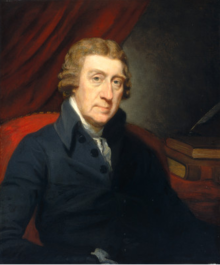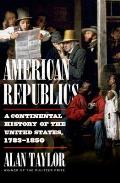Robert Donkin was born in 1727 and by the eventful year of 1745 was an officer in the
British army. In the Seven Years’ War he served as an aide to Gen.
Thomas Fowke and Gen.
William Rufane.
In 1772 Capt. Donkin married Mary Collins, daughter of a
clergyman. They had their first
child, a son they named Rufane Shaw Donkin, in early October, with two daughters to follow.
Then came the American War. In 1775 Donkin was assigned to the Royal Welch Fusiliers, or 23rd Regiment. He was one of the officers present at the regiment’s St. David’s Day dinner on 1 March
reported yesterday.
By 1777 Donkin held the rank of major in the 44th Regiment of Foot, stationed in
New York City. He decided that was the right time and place to publish what he called a “collection and remarks of a late general officer of distinguished abilities, in the science of war, in every possible situation of an army.” That probably meant Gen. Rufane, who had died in 1773. Donkin supplemented that collection with his own material.
The major collected £290 in subscriptions, mostly from his fellow officers. He stated that he “published for the benefit of the children and widows of the valiant soldiers inhumanly and wantonly butchered when peacefully marching to and from
Concord, April 19, 1775, by the rebels.”
Donkin made a deal with
Hugh Gaine (1726-1807), a Belfast-born
printer who had supported the Patriot cause in his
New-York Mercury newspaper until late 1776. Then Gaine had decided the British would probably win, slipped back into the occupied city, and resumed publishing his paper with a new editorial slant.
Donkin’s
Military Collections and Remarks offered a livelier description of the 1775 St. David’s Day dinner:
The royal regiment of welch Fuzileers has the privilegeous honor of passing in review preceded by a Goat with gilded horns, and adorned with ringlets of flowers; and although this may not come immediately under the denomination of a reward for Merit, yet the corps values itself much on the ancientness of the custom.
[Footnote:] Every 1st of March being the anniversary of their tutelar Saint, David, the officers give a splendid entertainment to their welch brethren; and after the cloth is taken away, a bumper is filled round to his royal highness the Prince of Wales, (whose health is always drunk the first that day) the band playing the old tune of, “The noble race of Shenkin,” when an handsome drum-boy, elegantly dressed, mounted on the goat richly caparisoned for the occasion, is led thrice round the table in procession by the drum-major.
It happened in 1775 at Boston, that the animal gave such a spring from the floor, that he dropped his rider upon the table, and then bouncing over the heads of some officers, he ran to the barracks with all his trappings, to the no small joy of the garrison and populace.
Donkin’s text thus explains that mysterious sentence from the
Boston News-Letter article on this event: “St. David, mounted on a Goat, adorned with Leeks, presented himself to View.” A young drummer played the part of St. David while riding on a goat. (A goat who, on this date, didn’t want to be ridden.)
These sources from the Revolutionary years show that the claim I
quoted back here, that the Royal Welch Fusiliers adopted a “wild goat” that trotted onto the
Bunker Hill battlefield, to be bunk. The regiment already had “a Goat with gilded horns” months and probably years before the battle.
As for Maj. Donkin, he continued serving in the British army. In 1778 he put his son, then aged five, on the roster of the 44th Regiment as an ensign, and the following year promoted him to lieutenant. Meanwhile, the boy was studying at the Westminster School in London.
Donkin became lieutenant colonel in charge of the Royal Garrison Battalion from 1779 to 1783, then colonel in 1790, major general in 1794, lieutenant general in 1801, and general in 1809. The picture above shows him in the Pump-Room at Bath in 1809. Donkin died in Bristol in 1821. By then his son was a decorated major general and acting governor of the Cape Colony.
TOMORROW:
How the goat story bounced.


















